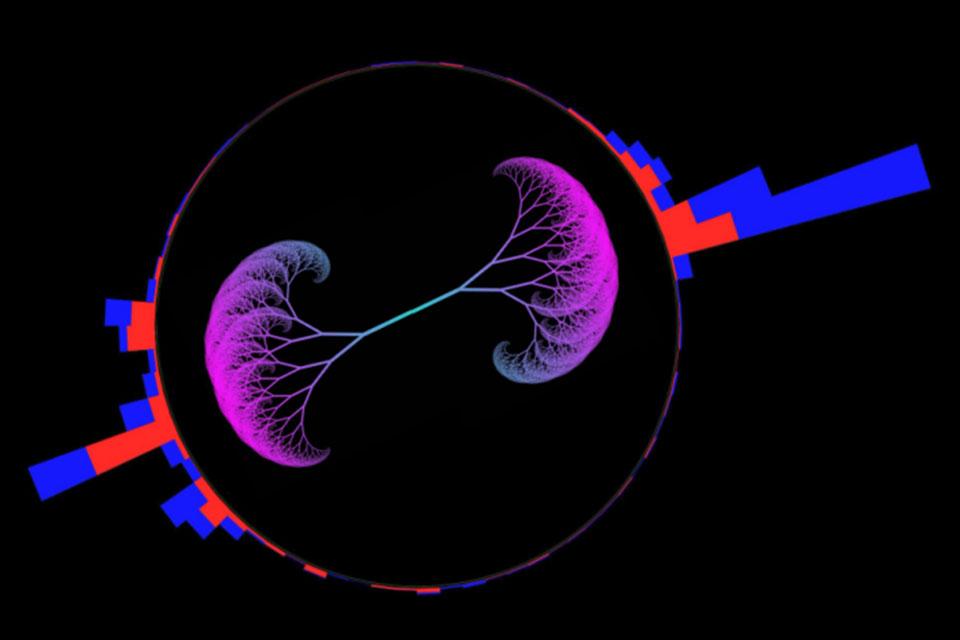A startlingly beautiful image (see above) that has just been published was inspired by an algorithm proposed by theorists from the Rudolf Peierls Centre for Theoretical Physics at the University of Oxford in 2018. The striking image depicts a reconstructed event in the Compact Muon Solenoid detector at the Large Hadron Collider; the work probes the interactions between quarks and gluons within energetic sprays of particles called jets.
Oxford’s Professor Gavin Salam and Dr Frederic Dreyer along with collaborator Gregory Soyez from Saclay, first developed the algorithm that enabled this latest construction of a hierarchical tree of emissions to analyse the radiation pattern as described in The Lund jet plane in the Journal of High Energy Physics in 2018. Besides the visualisations, it provides a way of measuring the strong interaction – quantum chromodynamics (QCD) – in one unified approach across a broad range of energy scales. That brings insight in particular into one of the most mysterious aspects of QCD, namely the way in which quarks and gluons come to be dynamically confined inside tightly bound composite particles like protons and pions.
Read the article in full: https://cms.cern/news/fractal-tree-quarks-and-gluons

